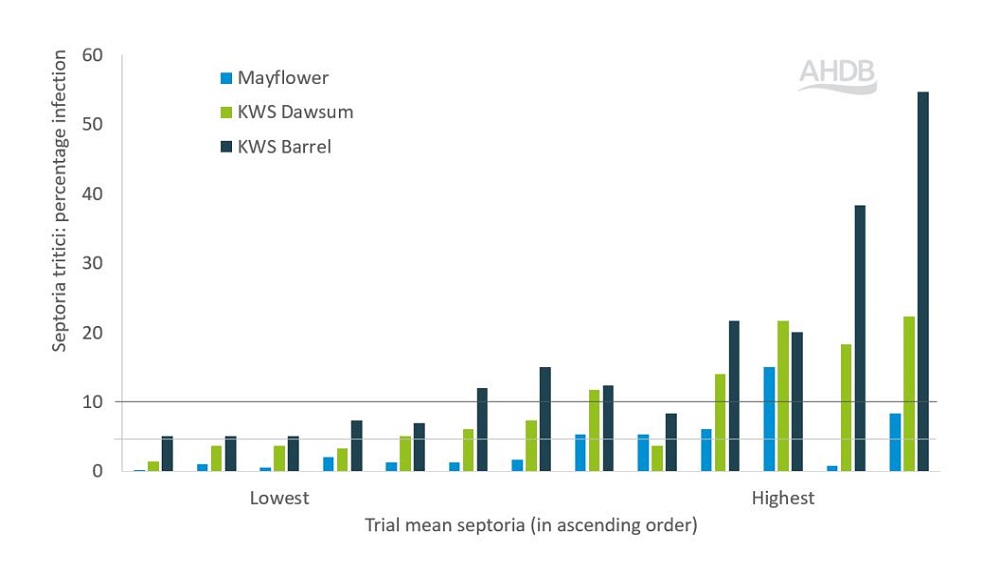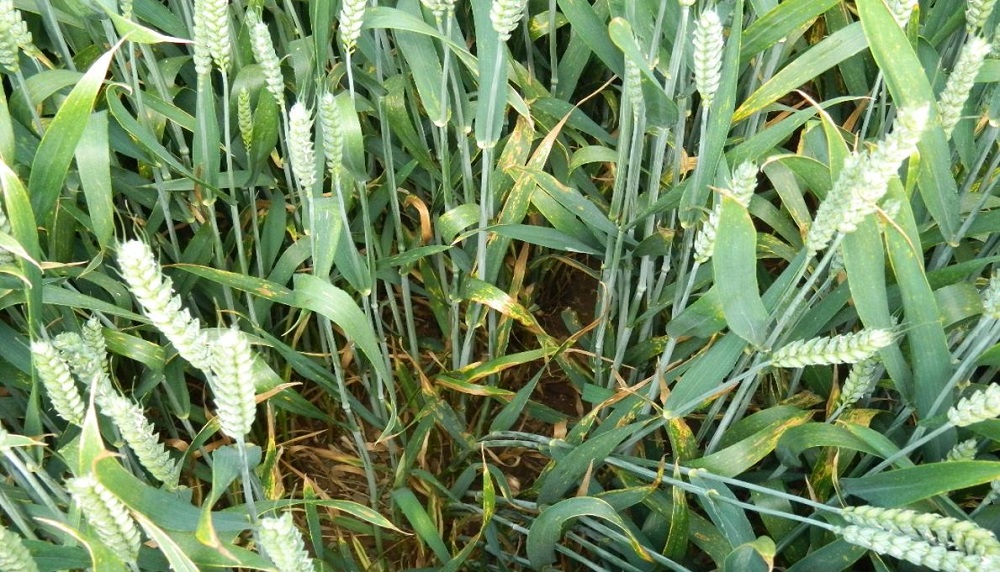RL trials and septoria: a changing view of genetic potential
Monday, 8 January 2024
Chemistry can no longer be relied upon to keep varieties free of septoria tritici in winter wheat. Paul Gosling, who leads the Recommended Lists (RL) project at AHDB, explains how this forced a rethink of the project’s variety-trial protocols.
In 2023, a relatively wet March and cool April boosted septoria disease levels in many areas, as observed in commercial crops, fungicide performance trials and RL trials.
It provided a tough test for varieties.
In the RL, we aim to assess genetic potential by removing any barrier that could prevent a variety from achieving its maximum yield at each trial location.
Robust fungicide programmes
To help strip away the influence of disease, our fungicide-treated trials use the best products, as well as robust rates and timings.
For the control of this major foliar disease, the fungicide programme, like those in commercial situations, is weighted towards the T2 timing to help protect the plants’ flag and upper leaves (and yield).
Septoria-active products used in the RL fungicide programme
|
Timing |
Products |
Active ingredients |
Rate |
|
T0 |
Arizona |
Folpet |
1.0 l/ha |
|
T1 |
Revystar XE Arizona Elatus Era* |
Fluxapyroxad and mefentrifluconazole Folpet Benzovindiflupyr and prothioconazole |
0.8–1.25 l/ha 1.0 l/ha 0.6 l/ha |
|
T1.5 |
Multiple Arizona |
Prothioconazole Folpet |
0.6 l/ha 1.0 l/ha |
|
T2 |
Univoq Arizona |
Fenpicoxamid and prothioconazole Folpet |
1.0–1.5 l/ha 1.0 l/ha |
|
T3 |
Prosaro Arizona |
Prothioconazole and tebuconazole Folpet |
0.8–1.0 l/ha 1.0 l/ha |
Table notes: Arizona is compulsory at T1 and T2 and can be used at one other timing. *Elatus Era is included as an optional extra for its activity against rusts (for situations with very high rust pressure), but it has activity against septoria tritici.
Disease levels
The bar chart shows septoria tritici infection levels (early July assessment) in fungicide-treated RL trials in 2023 on three varieties (disease resistance ratings shown in brackets):
- Mayflower – the most septoria-resistant variety (8.9)
- KWS Dawsum – a very popular variety (6.3)
- KWS Barrel – a very septoria-susceptible variety (4.6)
Note: KWS Barrel is no longer listed but it is included as a control variety in trials.
Septoria tritici levels recorded in fungicide-treated RL trials in 2023
 AHDB
AHDB
Note: Not all fungicide-treated trials in 2023 recorded presence of the disease.
Even when a robust fungicide protocol was followed, high septoria levels were observed in some trials in 2023.
In the relatively susceptible variety (KWS Barrel), the percentage of infection was as high as 55% and never dropped under 5% in these trials.
RL protocols
In the past, we aimed to keep disease below 5% in fungicide-treated trials. If disease was above this, the yield information would not have been used in the main data set.
However, with the chemistry now available, we can no longer hope to keep disease below 5%.
With the potential to lose large amounts of data, we were forced to rethink how genetic potential was assessed.
We now include data from fungicide-treated yield trials even when disease exceeds 10% (if the fungicide protocol has been followed).
It is important that the RL trials follow robust protocols. However, it is equally important that the protocols evolve and respond to changes in the growing environment.
The revised RL protocols now better assess genetic potential in context with the fungicides available to us today.
RL 2024/25
Despite the high septoria levels in 2023, there were no significant changes in disease ratings in RL 2024/25.
This is because the disease rating calculation takes year-to-year variation into account.
Further information
This blog is based on Paul’s presentation at the 2023 Agronomy Conference
 AHDB
AHDB


